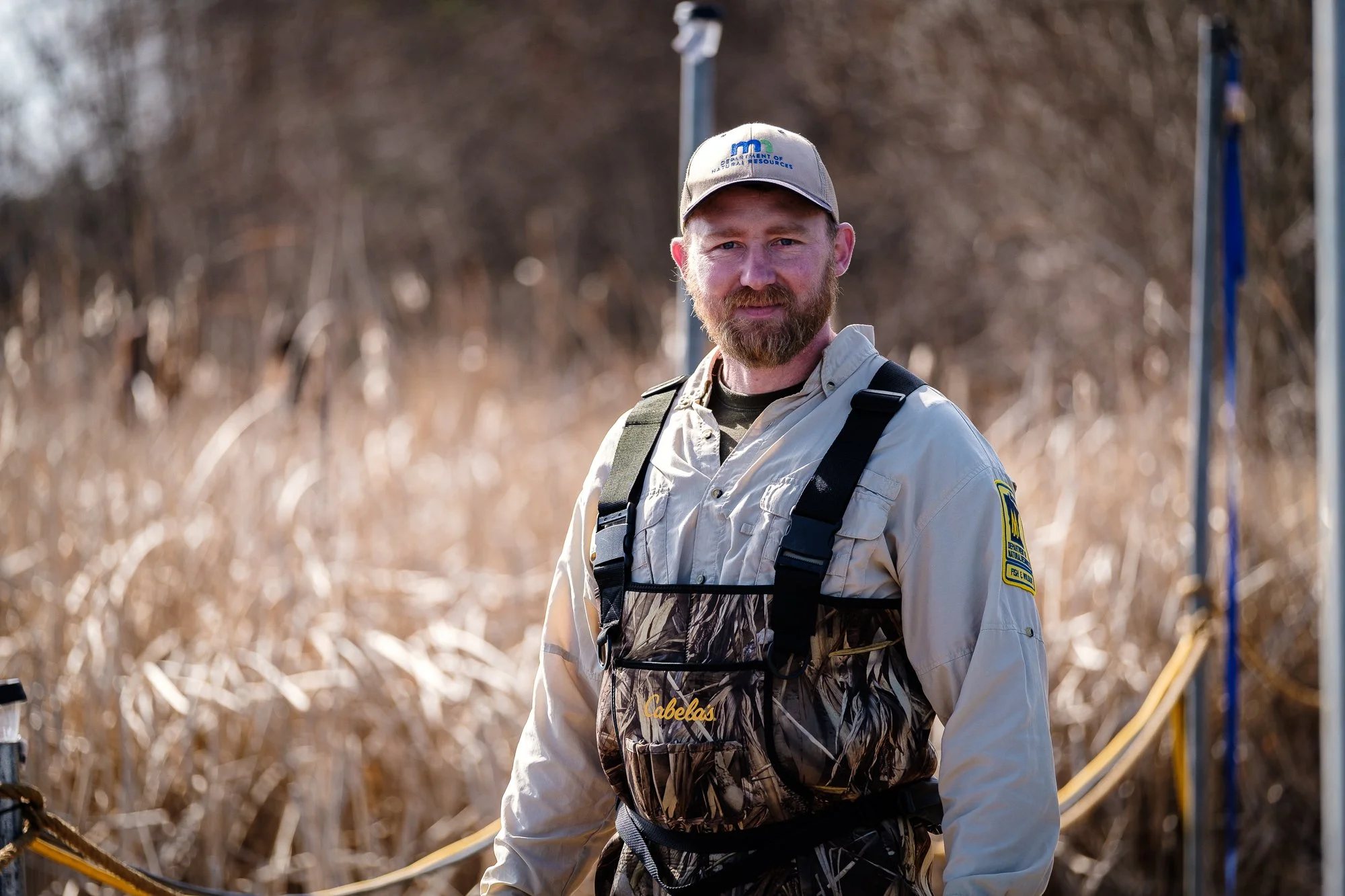With a full week of fishing now in the books, we’ve had a chance to compare real life experiences with recent DNR fisheries reports about Lake Winnie’s fish populations. So far, the key takeaway about this season is that the very large 2019-year class of walleyes have matured, and folks are catching lots of ideal eater size walleyes. The typical bag coming in includes most fish measuring 15 to 16-1/2 inches, with an occasional larger, 17-17 ½ inch fish from the 2018-year class. Not many, but some fish from the 2013-year class remain in the system too, and folks are reporting 23-to-26-inch walleyes striking from time-to-time.
Image of Rand Olson with beautiful walleye caught on Cutfoot Sioux
A water quality assessment in 2023 revealed that Winnie’s water clarity measured 27 feet, an all-time record clarity for the lake. As we’ve discussed in past reports, the ultra-clear conditions have impacted how our guests’ fish for, and catch walleyes. Already nomadic by nature, walleyes have become “flighty”, moving quickly between shallow and deep water. This week walleyes have offered perfect examples of this behavior.
A friend offered this; “We caught fish steadily for most of the morning on Wednesday, the walleyes were feeding around a patch of bulrushes surrounded by 6 to 7 feet of water. The walleyes were there feeding on schools small perch, and possibly shiners too. The skies were dark, there was a light chop on the water, and with all that food, they were reluctant to leave the area. We were happy with that spot, so we tried again the next day. But now, the water was flat and there was a little sunshine peeking through the clouds, and all those fish were gone.”
Screen View of key Lake Winnie walleye location on mid-depth flats
Within hours, we’d heard from one of the area’s better fishing guides that those same fish had moved deeper, now inhabiting a flat in the 12-to-15-foot depth range. They were still active and they caught them by casting and retrieving ¼ ounce jigs tipped with either a shiner, rainbow or large fathead minnow.
At first glance, it could appear that the fish were not holding on any specific structures. Look closer at the screen shot of his graph, it shows that the walleyes were moving in and out of a depression within the flat. That hole, which may have been holding bait fish, seemed to be the center of activity on that fishing trip.
TRIP TIP: When you’re searching for fish on Lake Winnie’s sprawling flats, seek out and make note of any irregular features. Depressions like this one, gravel patches, vegetation and clam beds all offer habitat for bait, which in turn attracts gamefish.
An alternative to locating fish in shallow water, or on the flats, is to search for small schools of walleyes holding along the steep breaklines. Key depths range from 18 to 18 feet of water and key locations are main lake bars, located near shore.
Ordinarily, we don’t suggest fishing in deep water because it’s hard on the fish, barotrauma is dangerous to them. There are some exceptions though, and because almost all of the fish being caught are of “keeper” size. An angler who needed to gather a few fish for a meal could likely get some by searching the deeper edges of shoreline related bars. Key depths are 22 to 28 feet, with an occasional small school of fish showing up in 30 feet of water. The schools of fish are not large but appear as scattered smaller packs of 6 to 10 fish. Inside corners have been more likely to hold fish that points or straight stretches of breakline.
Nice Lake Winnie Walleye
If you decide to fish the deeper spots, take a few fish for a meal and then move on to another location or search for alternative species. Catch and release fishing in deep water is not a good idea.
Whether you fish shallow, deep or in the middle, be prepared to move. If you catch fish in an area, and they seem to suddenly disappear, they are likely to be nearby, using a deeper, or shallower portion of the same flat, or related structural features.
So far, jigs and minnows are still the best bet for catching walleyes. Water temperatures remain cool, 56 to 59 degrees, so faster moving presentations have yet to become effective. It’s a good idea to have an assortment of 1/16, 1/8 and ¼ ounce sizes and swap them whenever your depth patterns change.
Shiners are widely available now, so you caan buy them if you like. Fatheads and rainbows are working though, so if you want to save some of the expense, grab an assortment instead of insisting on having only shiner minnows.
Panfish have not appeared in the shallows yet, but we are watching for them. Updates will be available as the conditions turn warmer, and they begin moving towards the shoreline.













